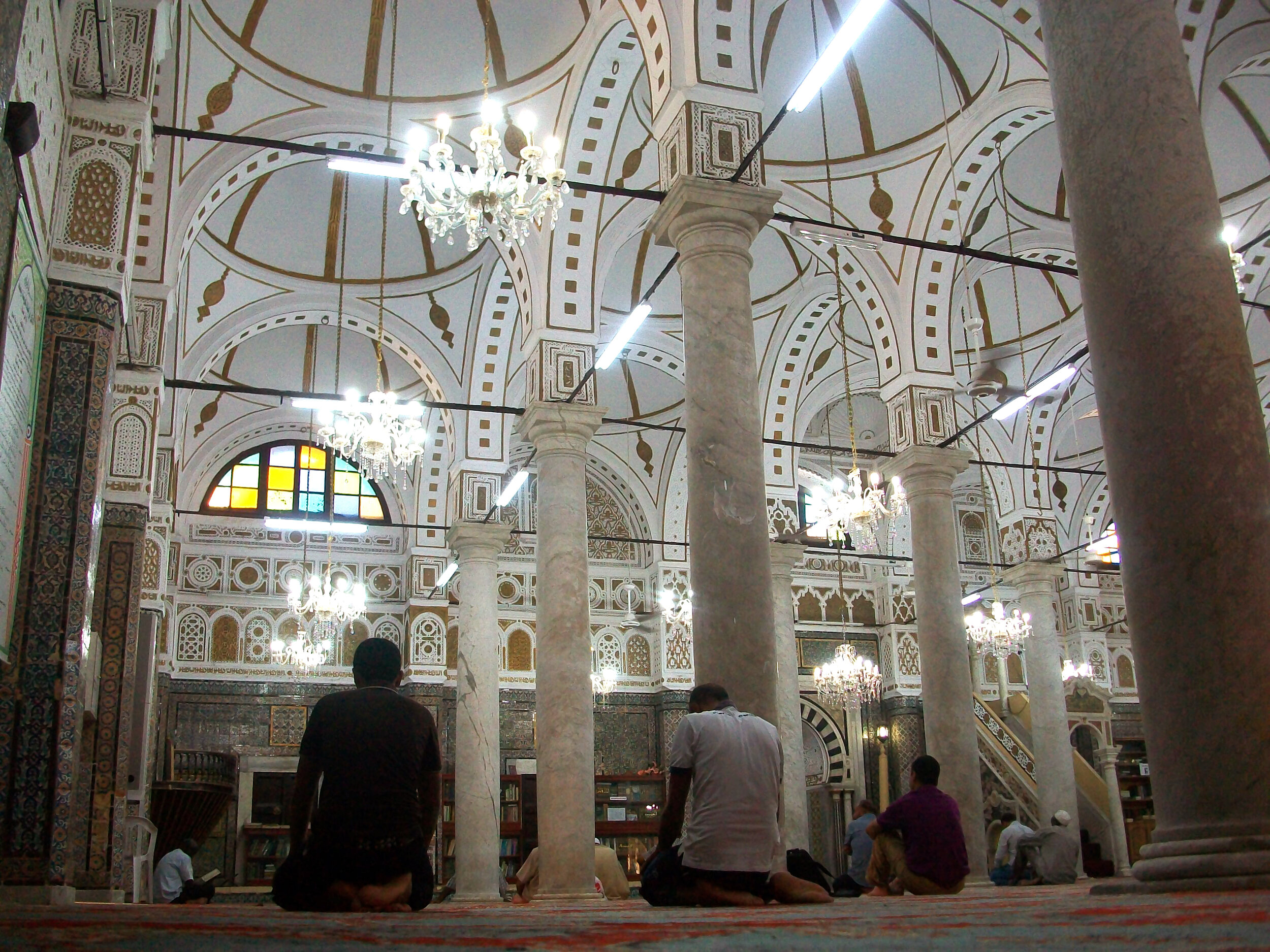OTTOMAN ARCHITECTURE.
The architecture of the Ottoman period reflects the Islamic character of the Ottoman empire. After their conquest of Tripoli, the Ottomans concentrated on the reinforcement of cities and castles and the building of mosques, schools, baths and markets. Many of the old churches were incorporated into mosques. Most of the mosques built during this period were given Ottoman names, including the Sidi Darghut mosque, the Atiq Mosque and the Karamanli Mosque, among others. Their simplicity of style of the buildings is reflective of the minimalist architectural features of this era. The toned down decorative carvings on stones, marble and timber, and the unadorned domes and minarets also reflect the minimalist style during this period, as opposed to earlier Islamic architectural decor which featured intricate geometrical designs1.
Sidi Darghut MOSQUE
The Sidi Darghut Mosque of Tripoli was the first mosque built by the Ottomans in approximately 1560.
The mosque was erected by Dargut Reis (‘Turgut Reis’ in Turkish) the Ottoman naval commander, after the 1551 recapture of Tripoli from the occupation of the Knights Hospitaller. The site where the mosque was built was part of the Hospitaller Church grounds, with the original building being left in place and integrated into the mosque: this was achieved by the addition of new wings to the sides of the existing structure.
The mosque has two mihrabs and a minaret, which were renovated by the Ottoman military commander Iskender Pasha in 1602.
Sidi Darghut Mosque in 1894. ‘Life in Tripoli, with a peep at ancient Carthage’, by THOMPSON, George E. - of Birkenhead.
British Library HMNTS 010096.e.63. Public domain, via Wikimedia Commons.
The building is enclosed in a quadrilateral compound, and includes a cemetery, a fountain for offering Wudu (pre-prayer ablutions) and a number of tombs, which include that of Dargut and his family. The prayer hall of the mosque has a T-shaped structure, quite similar to the mosques found in the Turkish city of Anatolia. The roof of the prayer hall was originally constructed with 27 small cupolas, however this was further increased to 32 after reconstruction in the post war years. This is a feature typical of traditional Libyan architecture and the mosques built in the subsequent years followed the same architectural style2.
Sidi Darghut Mosque today.
Karamanli Mosque
Karamanli Mosque, Exterior
Karamanli mosque is named after Ahmed Karamanli, the founder of the Karamanli dynasty which ruled the territory of Tripoli and the surrounding area from 1711 to 1835 in Ottoman Tripolitania. The reach of the Karamanli dynasty eventually expanded into Cyrenaica and Fezzan.
Karamanli mosque was built in the 18th century in Tripoli. The building of the mosque, which lies just off the Souq Al Mushir market in Tripoli, is the part of the larger complex that also includes the madrassa as well as the tombs of the members of the Karamanli dynasty. During the Libyan civil war the mosque was looted, vandalized and damaged severely 3.
Interior of the Karamanli Mosque. Abdul-Jawad Elhusuni (عبدالجواد الحسوني), CC BY-SA 3.0 <https://creativecommons.org/licenses/by-sa/3.0>, via Wikimedia Commons
FOOTNOTES.
https://en.wikipedia.org/wiki/Fatimid_architecture
Petersen, Andrew (11 March 2002). Dictionary of Islamic Architecture. Pg 166.
Ham, Anthony (1 August 2007). Libya. Ediz. Inglese. Lonely Planet. p. 132.
Petersen, Andrew (11 March 2002). Dictionary of Islamic Architecture. Pg 166.
Temehu.com. “Qaser Alhaj -The Pilgrim Castle.” Qasr Al-Haj (Qaser Alhaj)-The Pilgrim Castle. Accessed February 18, 2021. https://www.temehu.com/Cities_sites
Temehu.com. “Islamic Tourism & Ancient Mosques In Libya.” Islamic Tourism & Ancient Mosques In Libya: Accessed February 18, 2021. https://www.temehu.com/islamic-tourism-and-mosques.htm.
ibid




